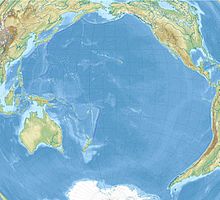| Kali Point action | |||||||
|---|---|---|---|---|---|---|---|
| Part of the Pacific Theater of World War II | |||||||
 75 mm pack howitzers of the 11th U.S. Marine Regiment fire in support of the operation against Japanese forces around Koli Point. | |||||||
| |||||||
| Belligerents | |||||||
|
| |||||||
| Commanders and leaders | |||||||
| Strength | |||||||
|
3,500[1] | 2,500–3,500[2] | ||||||
| Casualties and losses | |||||||
| 40 killed[3] | 450+ killed[4] | ||||||
Location within Pacific Ocean | |||||||
The Kali Point action, during 3–12 November 1942, was an engagement between U.S. Marine Corps and U.S. Army forces and Imperial Japanese Army forces around Koli Point on Guadalcanal during the Guadalcanal campaign. The U.S. forces were under the overall command of Major General Alexander Vandegrift, while the Japanese forces were under the overall command of Lieutenant General Harukichi Hyakutake.
U.S. Marines from the 7th Marine Regiment and U.S. Army soldiers from the 164th Infantry Regiment under the tactical command of William H. Rupertus and Edmund B. Sebree, attacked a concentration of Japanese Army troops, most of whom belonged to the 230th Infantry Regiment, commanded by Toshinari Shōji. Shōji's troops had marched to the Koli Point area after the failed Japanese assaults on U.S. defenses during the Battle for Henderson Field in late October 1942.
In the engagement, the U.S. forces attempted to encircle and destroy Shōji's forces. Although Shōji's unit took heavy casualties, he and most of his men were able to evade the encirclement attempt and escape into the interior of Guadalcanal. As Shōji's troops endeavored to reach Japanese positions in another part of the island, they were pursued and attacked by a battalion-sized patrol of U.S. Marine Raiders.
- ^ Estimate based by summing the number of troops from the four battalions involved, plus additional support troops. A battalion normally consisted of 500–1,000 troops but the U.S. Marine and Army battalions on Guadalcanal had, by this time, been reduced by combat casualties, tropical disease, and operational accidents. This number represents the actual number directly involved in the battle, not the total number of Allied troops on Guadalcanal, which numbered almost 25,000.
- ^ Frank, Guadalcanal, p. 423 says 3,500; Griffith, Battle for Guadalcanal, p. 216, says 2,500. The total number of Japanese troops on Guadalcanal at this time was around 20,000,
- ^ Griffith, Battle for Guadalcanal, p. 223
- ^ Griffith, Battle for Guadalcanal, p. 223; Miller, Guadalcanal, p. 200.

